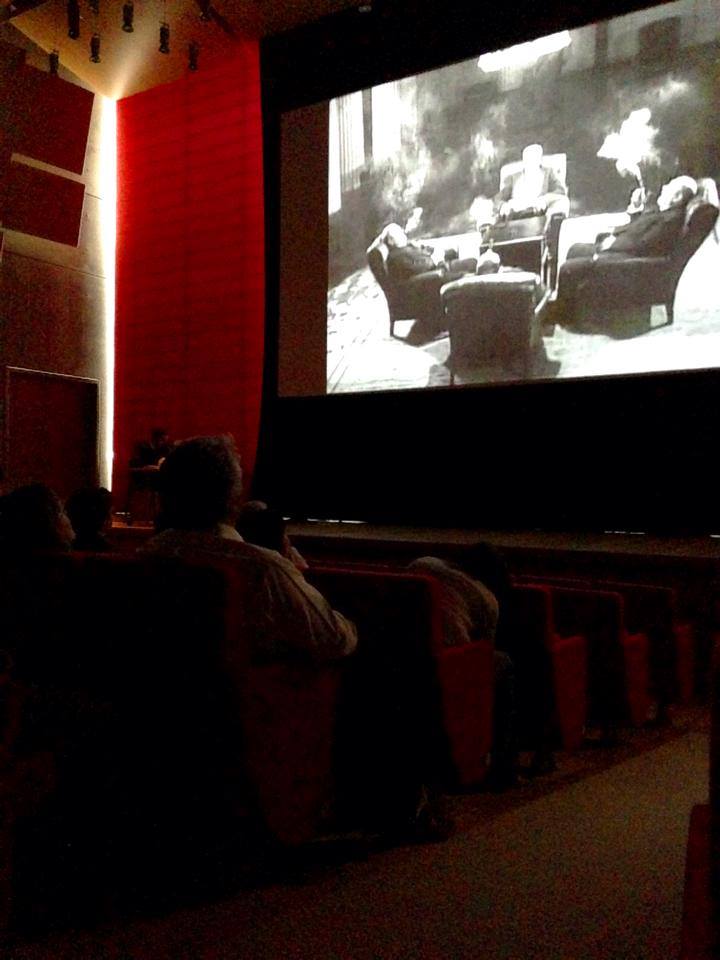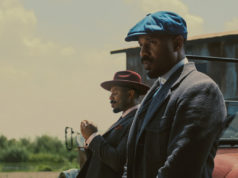Fort Worth is still waiting for its first indie film theater, but that hasn’t stopped groups like the Lone Star Film Society from programming cinematic experiences that present film as art, not just a divertissement. Last Sunday, the new Piano Pavilion auditorium was blacked out for a showing of Sergei Eisenstein’s 1925 masterpiece Strike. The silent film alone would have made for a thought-provoking afternoon, but audiences were also treated to live improvised accompaniment by Fort Worth multi-instrumentalist James Talambas (The Theater Fire, Migrant), all as part of ArthouseFW, a weekly film series and collaboration among LSFS, the Modern Art Museum of Fort Worth, and the Kimbell Art Museum.
Before the screening, Lone Star managing director Ramtin Nikzad explained that Eisenstein was making intricate films in the Soviet Union at a time when filmmakers were still defining what cinema was. He then deferred to his former SMU professor Sean Griffin for further insight into the director’s life. After noting the irreverent selection of Easter Sunday to show a communist propaganda movie — mercifully, lightning did not strike the building — Griffin said there are two important aspects of Eisenstein’s work to keep in mind: 1.) Eisenstein was part of the Constructivist movement, which meant he saw art as an active player in shaping reality, and 2.) his works are intentionally full of communist ideology.
The brief intro served as something of a warning for those unfamiliar with this film. Strike is unsettling, surreal, and captivatingly powerful. The film follows the ill-fated attempts of factory workers in pre-Soviet Russia to strike in hopes of gaining better wages and working conditions. Eisenstein left no ambiguity as to each scene’s message. The unscrupulous business owners are portrayed as bloated, gluttonous caricatures of the robber barons of yesteryear, and the workers are imbued with heroic imagery, whether in their idyllic moments at home or strength in confronting their subjugators en masse.
In homage to the segmented editing method innovated by Eisenstein, known as montage, Talambas employed a smattering of pre-recorded samples from Eastern European classical music, Russian folk music, and jazz idioms for the film’s impromptu soundtrack. Closely following the action onscreen, Talambas sat onstage (laptop and an electronic pad to manipulate samples in hand) and executed each pre-recorded track and sampled sound effect with the precision of a skillful conductor. Sometimes the effects were literal, like the droning hum of the factory floor; other times the sounds were merely suggestive, like the raucous gypsy music that accompanied the scenes of factory spies reporting back to the managers. At all times, the music added prescience to each moment of the film.
Purists will always debate the efficacy of blending artistic media for any stage performance (to say nothing of recasting nearly century-old films in modern soundscapes), but I happen to hold a strong opinion in this regard. Two decades after Strike, Eisenstein collaborated with one of the preeminent avant-garde composers of his day, Sergei Prokofiev, for his film Alexander Nevsky. In the end, Eisenstein, like many great artists before him, was simply searching for the best medium to convey his progressive ideas.
Sunday’s event was certainly performed with that spirit in mind.












